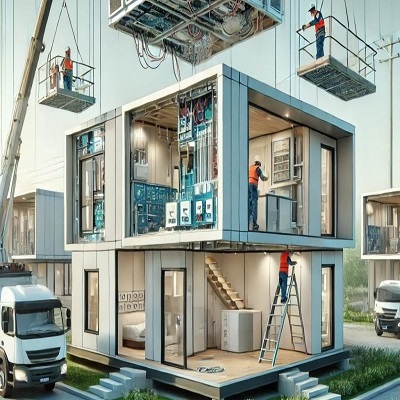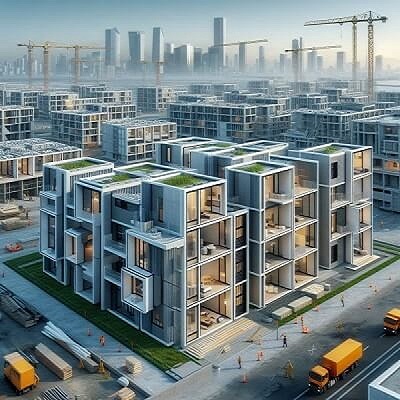Modular and Prefabricated Housing

Modular and Prefabricated Housing: Speed, Efficiency, and Innovation
Introduction
Modular and prefabricated housing is rapidly gaining traction as a solution to the global housing shortage, rising construction costs, and the need for rapid deployment. These systems involve manufacturing housing units or components off-site in controlled factory environments and assembling them on-site. Prefabrication enhances quality, reduces waste, shortens construction time, and supports sustainability.
Types of Modular Construction
Permanent Modular Construction (PMC) – Fully assembled modules are transported and installed for long-term use.
2. Relocatable Modular Buildings – Temporary structures designed for rapid setup and reuse.
3. Panelized Systems – Walls, floors, and roofs are manufactured separately and assembled on-site.
4. Hybrid Systems – Combine modular cores with traditional or local construction techniques.
Advantages
30–50% faster construction timeline
• Up to 20% lower construction costs
• Improved quality control and less weather disruption
• Reduces material waste and site disturbances
• Supports energy-efficient and green design certifications
Case Studies
B2 Tower (New York, USA) – One of the tallest modular buildings in the world.
• Mini Sky City (China) – 57 stories built in 19 days using prefabricated elements.
• BoKlok Project (Sweden) – IKEA’s modular affordable housing initiative.
Scientific Insight
According to the Modular Building Institute, modular construction can reduce project duration by up to 60% and reduce construction waste by over 70%. Studies show improved thermal performance and airtightness in modular buildings.
Challenges
Transportation and lifting constraints for large modules
• Coordination complexity with local contractors
• Regulatory and zoning barriers in some regions
• Perception challenges about long-term durability
Conclusion
Modular and prefabricated housing offers a scalable, affordable, and sustainable solution to modern urban housing challenges. With continuous innovation in materials and design, these systems are poised to redefine the future of construction.
References
Modular Building Institute (2023)
2. World Economic Forum – The Future of Urban Development
3. McKinsey Global Institute – Modular Construction: From Projects to Products




